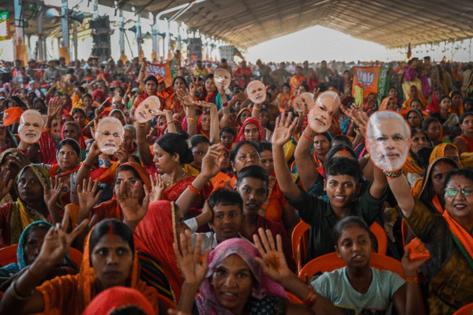Mihir Sharma: India's south needs more people, not more babies
Published in Op Eds
India may now be the world’s most populous country, with a citizenry closing in on 1.45 billion people. “Overpopulation” has long been a concern: When he was re-elected for the second time in 2019, Prime Minister Narendra Modi declared that dealing with a “population explosion” would be a major priority. His government tasked a special committee with studying “the challenges of fast population growth.”
Yet some of India’s most influential political leaders are now concerned about exactly the opposite problem.
Modi ally N. Chandrababu Naidu, who runs the fast-growing state of Andhra Pradesh in India’s south, has decided to restrict local politics to candidates with “two or more children,” in order to encourage local couples to have more kids. His counterpart in the even more developed southern state of Tamil Nadu, M.K. Stalin, has asked why Tamils could not have families with “16 children.”
Naidu and Stalin are expressing long-held concerns in the south. India’s aggregate population growth conceals vast regional disparities. States such as Andhra Pradesh and Tamil Nadu have total fertility rates equivalent to the Nordic countries or most of Eastern Europe — well below replacement rates, in other words. Other parts of the country, such as West Bengal, Goa and Kashmir, are approaching levels similar to demographically challenged countries in Western Europe or East Asia.
So it isn’t surprising that politicians in these states are sounding like those in Japan or Hungary — they’re responding to similar data. Naidu has even talked about villages in the hinterland of Andhra Pradesh emptying out, with only pensioners remaining, a familiar complaint in Japanese politics.
He and Stalin would be wise to learn from the failures of pro-natalist policies in those other countries, however. Such strategies have at best managed to increase birth rates marginally, and even then — for example, in Poland — the cost has been unsustainable.
As elsewhere, birth rates in India have declined thanks to an entirely predictable process. Women who are more educated, empowered, and marrying later are choosing to have fewer children. The parts of the country that are richer, more economically developed and socially progressive — the southern states — are thus shrinking fastest.
Thankfully, neither Stalin nor Naidu is proposing regressive policies in order to push the birth rate back up. What the two leaders should do is think more closely about why exactly they’re so worried.
Is their central fear that an aging population will slow economic growth in their states? Those effects won’t kick in for a generation yet. To mitigate the impact, policymakers should be doubling down now on efforts to expand employment and skilling opportunities, especially for women, so their states can grow rich before they grow old.
Or are southern politicians concerned — understandably — that shrinking voter rolls will further reduce their states’ influence over Indian politics? Current seat shares in the federal parliament are based on the 1971 census, when the south’s population was still comparable to the north’s. That’s no longer true. A long-delayed new census would almost certainly lessen their representation in New Delhi.
However, ignoring demographic reality can’t be the way that India repairs the fraying compact between New Delhi and dissatisfied state governments. A more effective response would be to allow states at risk of demographic decline greater voice in federal decisions, reversing the recent drift toward over-centralization.
Of course, one untapped strategy would solve both problems: migration. Just as the US never has to worry about its total fertility rate because of its ability to admit, absorb and assimilate immigrants, India’s richer southern states could grow in virtual perpetuity if they could take full advantage of the human resources of the underdeveloped north.
The population of the crowded Gangetic plains, India’s heartland, will grow for decades yet. Getting workers to move to vibrant southern states is the most logical way to rebalance the country’s politics and fuel its economic engine.
So why, then, are southern politicians bothering to talk about fertility rates and pro-natalist policies? Perhaps because, like politicians in other demographically challenged parts of the world, they refuse to see importing outsiders as a solution.
The biggest lesson they can learn from countries that have worried about this dilemma for far longer than they have is not to confuse ethnic anxiety with good economic and social policy. Migration supports growth: That’s as true in India as in the US or Europe.
____
This column does not necessarily reflect the opinion of the editorial board or Bloomberg LP and its owners.
Mihir Sharma is a Bloomberg Opinion columnist. A senior fellow at the Observer Research Foundation in New Delhi, he is author of “Restart: The Last Chance for the Indian Economy.”
©2024 Bloomberg L.P. Visit bloomberg.com/opinion. Distributed by Tribune Content Agency, LLC.




























































Comments